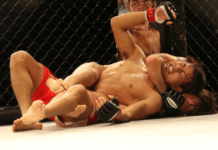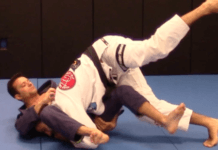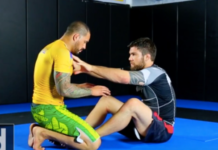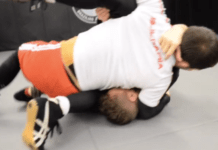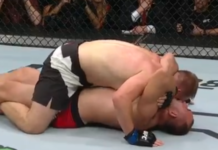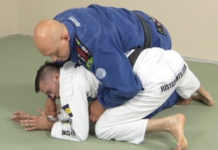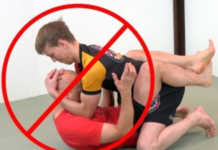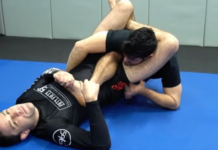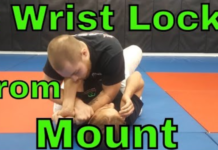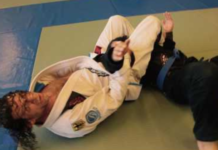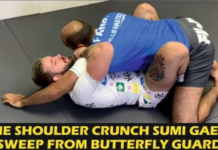Made famous by United States wrestler John Smith in the late 1980’s to early 1990’s, the Low single leg takedown led John Smith to win six world and Olympic gold medals. Opponents simply had no idea how to defend it.
Today, the low single leg attacks have evolved and so have the defensive counters. A less-than-perfect execution of the low single leads to a scramble situation in which the defensive wrestler has the ability to come out on top. Done correctly, the low single is one of the least energy-consuming takedowns you can execute. The technique uses the leverage of joints in order to collapse the opponent’s position en route to securing a takedown.
The low single leg does not use power and relies on some combination of precision, timing, and speed. While there are some exceptions to this, more technical, “slick-and-quick” wrestlers tend to use the low single.
Low Single Leg Takedown Set Up
Setting up the low single requires being some distance away- approximately one full arm’s length but no more. Understanding the use of this distance is key in the proper execution of the low single leg takedown. If you’re too close, getting in position to attack a low single requires you to move backwards slightly. Too far away, and you give your opponent a chance to defend or counter attack.
Because of the distance, low singles are set up from open space before wrestlers enter into tie-ups. To be effective here, wrestlers will perform “jab fakes” to keep the opponent guessing and off balance.
Misdirections in which you fake a low single to one leg before attacking the other leg are also easy to transition into. The key here is that your fake needs to be convincing enough so that your opponent reacts. This takes some time to practice.
Additionally, you can also transition from wrist control into a low single. This pulls the opponent’s weight ever so slightly so that their ability to counter the low single is slowed down. It’s also easy to transition from wrist control into a low single because this places your hands lower than most tie-up situations.
Low Single Leg Shoot
The actual low single shoot is fairly technical, and you need to be sure that you have completed the following five steps at the same time.
- Drop your knee into a low single. It is not a penetration step.
- Keep your head up and your back straight.
- Post your non-attacking hand on the ground so that you do not break your strong position.
- Place your hand behind your opponent’s heel. Ideally, your hand should be planted on the ground.
- Place your forehead into the side of your opponent’s knee. This makes it easy to collapse your opponent’s position.
Low Single Leg Finish
Low singles are typically finished in three different ways.
The easiest finish is to circle and run down the other hip. For example, if your low single connects to your opponent’s left leg, you will circle towards your opponent’s right hip and drive them into the mat to secure your takedown.
Against stronger and heavier opponents, you may not want to try to finish a low single that way because you’ll need to push their weight around. Your second option is to convert the low single into a high single. Circle around your opponent as if you were doing a sweep single takedown and lift your opponent’s leg off the mat. From there, trip the other leg to secure your takedown.
Both those takedowns are ideal, but sometimes your head slips past the opponent’s knee and he drapes over on top of you. In that case, you’ll need to execute the backdoor finish. This position may result in a scramble but the main idea is that you’ll need to raise your opponent up (while you’re on your knees) and turn back into your opponent to secure control over your opponent’s back. Most low single scrambles occur in this position, so you want to use the other two options before having to rely on the backdoor finish.
You may also be interested in:
- Double Leg Takedown: how to do it and most common mistakes
- Ankle Pick: How to set up and Finish this Takedown
- Wrestling vs BJJ: Differences between styles
Variations
Wrestling technique has evolved over time, so the low single has evolved as a result of this too. Some wrestlers use a cross-hand low single where they attack the low single with their opposite hand. Some wrestlers also have gotten into shooting a low double leg takedown where the technique seems to be a hybrid between the low single and the double leg takedown.
When drilling the low single leg takedown, the key is technique speed. If you can fluidly transition from one position to another without having to think about the individual steps, you will have an effective low single takedown.
Che is a former collegiate wrestler, member of Thailand’s national freestyle wrestling team, and current combat sport enthusiast. He writes about how to achieve higher physical and mental performance while being on a budget or a busy schedule. You can learn more about Che and his work at: https://chayoot.blog/welcome-to-chayoot-blog/

